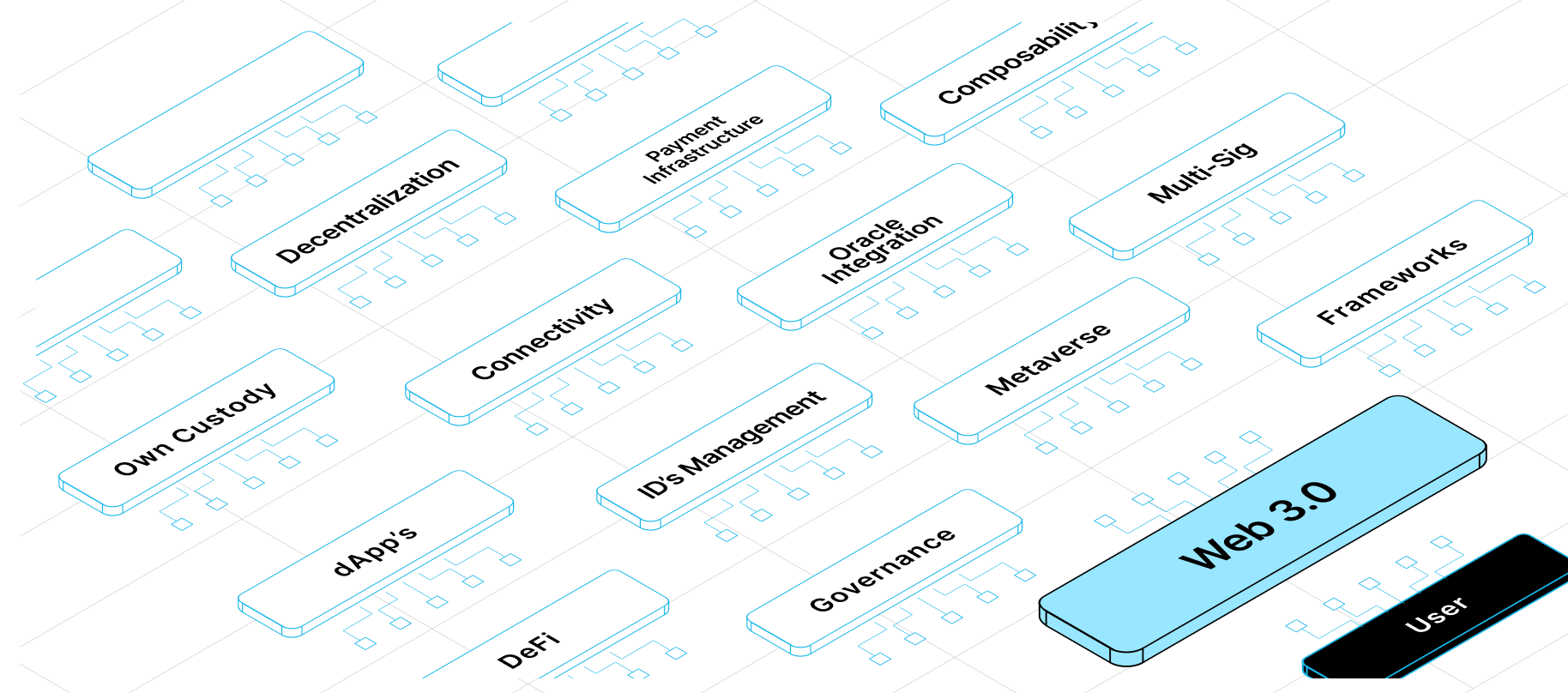
Web3
At BalanceAI, one of our core guiding principles that aids us in designing the necessary structure is "Build & Connect with Infinity." We harmonize Blockchain, AI, and Web3, serving as connectors for seamless innovation and fueling developer-enterprise connectivity to drive business growth.
Each component is a link in the chain, and thanks to Web3, we can interconnect blockchain and the AI world to provide users with a harmonious solution that enables them to monetize their skills.
Understanding Web3: A New Paradigm for the Internet
Web3, a term coined in 2014, represents a revolutionary vision for the internet. It encompasses an ecosystem of public blockchains, applications, and design philosophies focused on decentralization, transparency, and user ownership. Unlike its predecessors, Web1 (read-only) and Web2 (read-write), Web3 is defined by the concept of read-write-own.
Web1 to Web3: The Evolution of the Web
Web1: The Read-Only Era
Web1 was characterized by static websites and content consumption. Built on open-source protocols like TCP/IP and HTTP, it allowed users to access information but offered little interactivity.
Web2: The Read-Write Era
Web2 introduced dynamic content and user-generated data. Platforms allowed users to interact, create, and share content "Social Media era". However, this era also saw the rise of centralized entities controlling vast amounts of user data, leading to privacy concerns and data monopolies.
Web3: The Read-Write-Own Era
Web3 aims to rectify Web2's shortcomings by decentralizing the web. Users gain ownership of their data and digital identities, fostering a more secure, transparent, and equitable internet. Blockchain technology underpins this paradigm, enabling trustless interactions and decentralized applications (dApps).
Key Features of Web3
1. Decentralization
Web3 promotes a decentralized web where users control their data. Technologies like Smart Contracts and IPFS enable decentralized storage and multisignature, ensuring data is not held by a single entity but distributed across a network.
2. Ownership and Identity
Web3 introduces a money layer and an identity layer to the internet. Cryptocurrencies offer a decentralized financial system, while identity solutions allow users to manage their digital identities securely.
Web3 responds to Web2's data exploitation by empowering users to manage and control their data. Web3 Wallets act as cryptographic consent managers, giving users the ability to decide what information to sign and share.
3. Empowering Creators
Web3 empowers artists and creators by enabling direct ownership and monetization of their work. In addition to leveraging NFTs (Non-Fungible Tokens) for proving ownership and provenance of digital assets, Web3 introduces new economic models through platforms like blogs, repositories, and AI marketplaces such as BalanceAI. These platforms facilitate direct wallet remuneration and peer-to-peer transactions, significantly enhancing transparency and accessibility for creators to manage their work history and earnings.
Web3 fosters new patronage models where supporters can fund creators directly through mechanisms like crowdfunds. This shifts the power dynamics, giving more control to creators and their communities.
4. Cooperative Governance with Transparency
Web3 facilitates cooperative ownership and governance structures through DAOs (Decentralized Autonomous Organizations). DAOs allow communities to pool resources, make decisions, and manage projects collectively.
5. Financial Layer for the Internet
Web3 introduces a decentralized financial ecosystem, making digital payments and financial services accessible globally. Cryptocurrencies and DeFi (Decentralized Finance) protocols offer alternatives to traditional financial systems.
6. Open and Transparent Applications
Web3 promotes the development of open-source applications built on public blockchains. These dApps provide transparency and trust, ensuring users can verify the integrity of the platforms they use.
7. Interoperability and Composability
The ability to build on top of other applications, creating a more valuable and interconnected ecosystem similar to stacking lego blocks, AI Agents / Models.